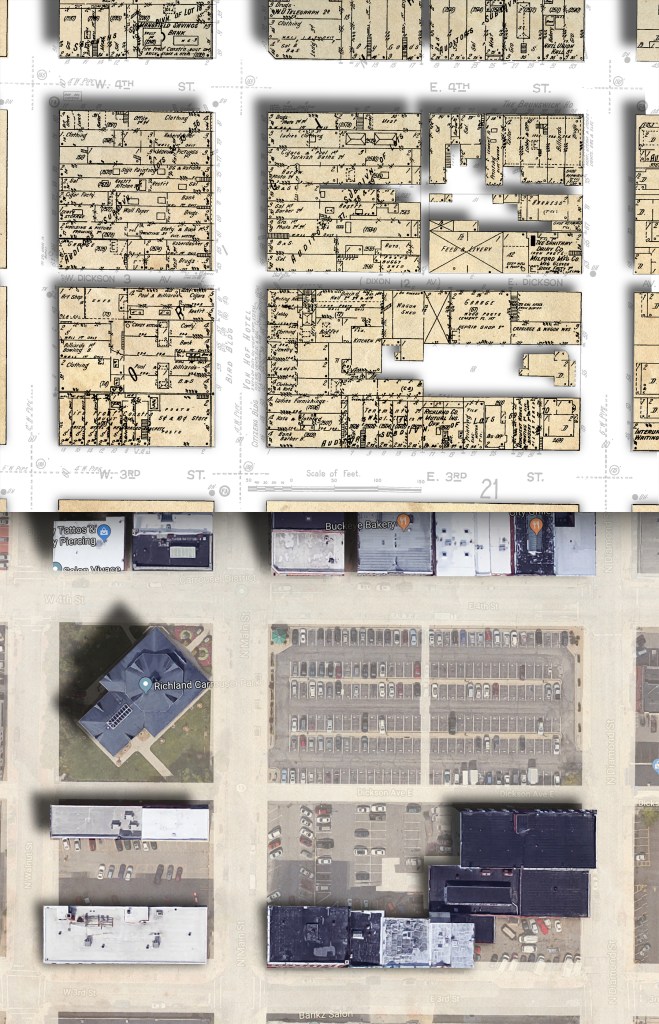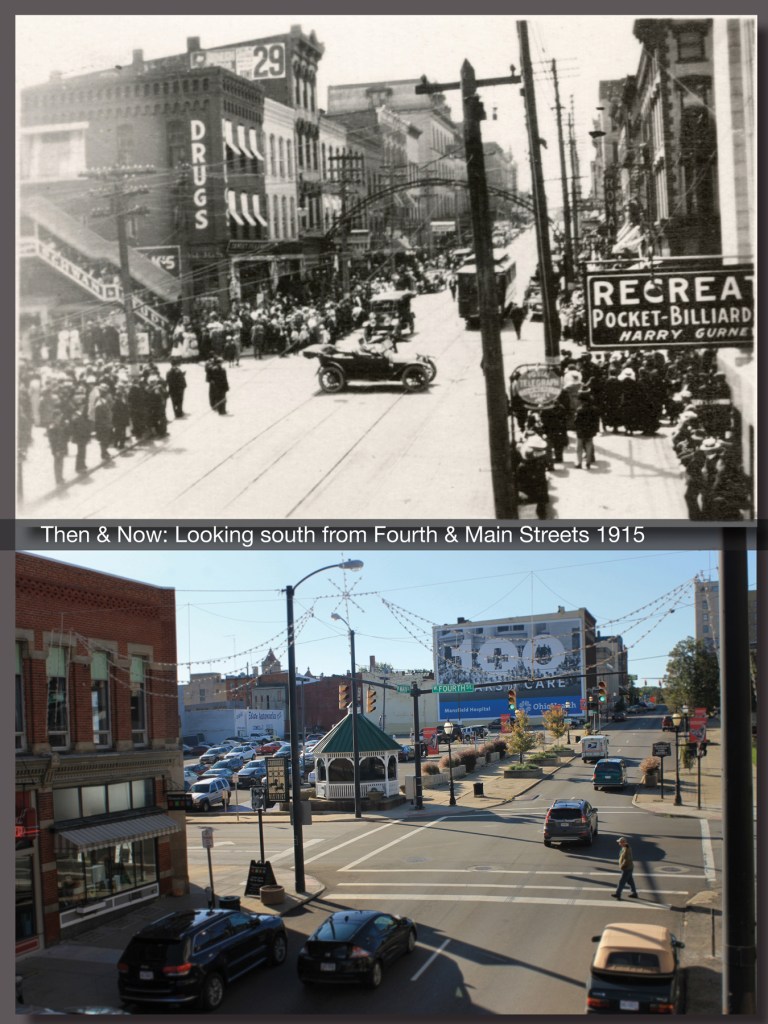
This story is in two parts: odd and odder.
But it is like a mathematical equation: in order to solve the puzzle, both sides have to be there: they complete each other; and neither of them means anything without the other.
It is a bizarre narrative I have to relate; and there are many reasons why I would not even venture into this story, and only one reason I do: it is a compelling mystery. Maybe if I pass it on, it will evoke more evidence in response. If you shout in to the void, sometimes an echo comes back; and sometimes it comes back in layers of reverberations like harmony: like a haunting melody.
Odd
The first part took place about twenty years ago when a woman contacted me with a story to tell. She heard I was writing history and it was very important to her that a particular moment of her family’s past get placed into the timeline of Mansfield’s legacy.
She came with photos ready to document her tale, and was eager to put them into the hands of someone else where they would be safe: almost like she was ready to be relieved of the responsibility. She had been carrying this story her entire life, and I think she could not rest peacefully in her grave until she had handed it off.
It had to do with her grandfather’s brother, and his untimely death in downtown Mansfield. And his subsequent return.
The woman’s grandfather had related to her these events since the time of her youth: the story about his unfortunate brother who was killed on North Main Street. She had three photo postcards that told the story. The first was a shot looking up the hill on Main from the corner of Fourth Street.
She had me study it for a moment, and told me her grandfather’s brother was in the picture.

To prompt her along, I asked politely if this image was made very long before he died. “No, no,” she interrupted, “it was taken several months after he died.”
“He was killed at a spot you can see in the photo. There was a great explosion across the street from where he was standing.”
Naturally, I assumed that something flying from the blast had killed him, but again she interrupted me to say that the loud noise startled a horse, who kicked her grandfather’s brother in the head. One moment he was stepping off the curb to cross the street; the next moment he was in the afterworld.
She pulled out the next two photos: one was the explosion; the other was a group of men in front of a cigar store.
“There! That’s him.” She put her finger right on his chest like the guy picked out of a mugshot book.


I studied the two pictures for a while so I wouldn’t have to look at her face which was working furiously like two squirrels fighting under a blanket, and her hands fidgeted nervously with her purse. She seemed flustered that I was not connecting the points of logic in her story.
But then I looked her straight in the eye and asked the obvious question, “What do these two photos have to do with the first one?” That was the cue she had been waiting for. She reached into her purse and pulled out a round magnifying glass.
“Look!” And she pushed her finger on a very specific place on the postcard. I imagined there was a permanent finger stain there from where she had pointed this out a hundred times through the years to a hundred squinting eyes.
With careful scrutiny, it was possible to make out the figure of a man; who was apparently standing 20 feet in the air among the shop signs of North Main Street.
“That’s him,” She exclaimed triumphantly, “That’s my grandfather’s brother!”

Suspense
I admit I didn’t know what to make of this. I asked more questions and, seeming more relaxed now that the critical part of the story had been broached, she filled me in on the details. Apparently, her grandfather’s brother worked at a shop on Main, located in the photo below where his image is seen. Supposedly, he had stepped out to run across the street on an errand; and that’s why he was without a vest under his coat. But he was wearing his hat, because no man went outdoors without a hat.
The woman’s grandfather was a well-known photographer in Mansfield, and he made his living taking pictures like this for postcards. He was the one who developed the glass-plate negative; and he was the one who spotted his bother gazing down at him from the print.
I could think of a dozen different ways this could be bogus; but only one by which it could be real: it was the earnest conviction of the woman who left the pictures in my care. Without question she believed it.
I never knew how to address this at all. I did the research to corroborate the corroboratable facts, and then let it go.
Quite simply stated: none of those buildings in the photo even exist any longer. What do you say about a ghost who has lost his haunts, in a time when no one remembers anyone involved? There is not much to say.

The same city space is seen today in the lower image, from a Google aerial photo. Almost every building seen in the foreground of the 1911 witness postcard is today a parking lot, or was replaced since 1911.
Interlude
The site on North Main Street where this ghost was supposed to hang out in 1911, is today the Municipal Parking Lot. It is several acres of flat blacktop, and there is absolutely nothing on the block to suggest storefronts or hotels or pharmacies or office buildings ever stood in that place. It has been erased clean.
The day after I became guardian of the three postcards (I came to call them ghostcards,) I went to that address and stared at the parking lot for a long time; marveling that generations of human Mansfield life could be so convincingly made to vanish.
And after that day I never so much as glanced at it again, until the day I encountered Tony there.
Odder
In order to understand the second part of this equation, you need to know about Tony. If you ever saw him wandering around the streets of downtown, or hovering in a doorway, it’s not likely you would particularly remember him. Unless he spoke, in which case, you’d never forget him.
Tony was only marginally hinged to our version of reality. I imagine there is a diagnosis for the way he was, but I never asked and nobody ever volunteered to explain.
Tony was a guy who alarmed many people. He was so tall and sharp-angled like a knife, and not at all in the normal range of what we expect of our neighbors. If he was off his meds you would hear him talking, ranting, shouting, arguing with no one at all. And if you saw just one or two of those sudden jerks of his elbows while he was making a point, you didn’t want to be anywhere in the way. So people steered clear of him.
But Tony was harmless and gentle as a little boy if you spoke with him like a real person. I would say, “It looks pretty cold out there,” and he would come back from wherever he was in his mind and say, “You got that right.”
I got to know him when I worked the night shift at Park Place Hotel.
He was tall and lanky; black as night, so that when he appeared at the door after midnight I could spot him only by his eyes, his shiny teeth, and his pale fingers clutching a garbage bag full of his stuff.
We weren’t supposed to let him in the lobby because all he wanted to do was use the restroom, and he made the customers nervous. The first time he showed up on a sub-zero night, I led him back to the ballroom and asked if he wanted to sleep where no one could see him, near the heating vents, behind some racks of chairs.
After that, he slept there every night, and we were friends.
A Spirited Conversation
One day I was walking up North Main Street, and when I got to the Municipal Parking Lot I saw Tony. He was having an animated conversation, and he was the only one standing there.
“Antonio,” I called, in our familiar way, and he shook my hand. “Hey Tim, Hey Tim,” he asked, “are there horses around here?”
I chuckled and said, “No horses in the city.” “Oh.” He seemed puzzled.
“What do you want a horse for?”
Tony talked really fast sometimes, and often very low, so I wasn’t sure I heard him right. “He said he got kicked by a horse.”
“Who said that?” I was looking around.
“The man in the hat.”
I wanted to ask more, but Tony was finished with our conversation and already on his way down the hill, waving over his shoulder.
There were no men in hats in the Municipal Parking Lot that day. But I was standing at the very place in the old postcard where the departed man supposedly frequented; and apparently Tony was talking with someone from 1911: someone who I may have a picture of.

Very interesting how unique events weaved themselves into your life (synchronicities). I am a native of Crawford County and my parents live in Richland County. I do have a question. I have an ancestry account and Newspapers account. I couldn’t find anyone who died from a horse kick to the head as a result of the explosion. I would think it would have been mentioned in the Mansfield paper after October 9th of 1911. Did you ever verify this particular individual?
LikeLike